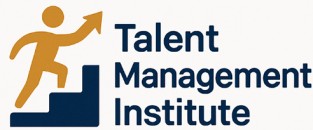
Understanding HR Enablers
Essential Role of HR Enablers in Talent Management
Understanding HR enablers is pivotal for unlocking the potential of talent management within any organization. These components form the core of aligning employees with strategic objectives, making them crucial for human capital development. In a world driven by data, the integration of technology with human resources is indispensable. HR enablers serve as a strategic foundation, enabling businesses to implement effective talent management systems. They ensure that workforce analytics are leveraged to enhance decision making and business outcomes. By focusing on critical success factors such as employee engagement, performance management, and retention, organizations can significantly impact their success. Cloud-based solutions like SAP SuccessFactors offer robust platforms for streamlining HR processes. These solutions are instrumental in connecting various HR functions and enhancing the employee experience. With a comprehensive approach to talent acquisition and management, they provide seamless data integration capabilities, facilitating informed and strategic decision making. Moreover, HR enablers involve strategies that incorporate human-centric approaches alongside technical solutions. This dual approach ensures that the workforce remains adaptable, skilled, and engaged. It is crucial for HR practitioners to remain cognizant of how these factors influence organizational performance. For a deeper understanding of HR enablers and their impact on talent management, explore this resource, providing insights into the fundamental role of HR coordinators in crafting effective strategies.Strategic Workforce Planning
Crafting a Strategic Approach to Workforce Planning
In today's rapidly evolving business landscape, strategic workforce planning has become crucial for organizations aiming to thrive. In essence, it's about aligning the workforce with short-term and long-term business goals. The core of this strategy involves understanding talent management, talent acquisition, and likely changes in the business environment.
Achieving success in workforce planning means identifying the critical success factors that drive your organizational goals. For instance, which roles are pivotal for future success? What skills need to be developed internally? Leveraging workforce analytics and data-driven insights allows decision makers to forecast demand and supply effectively, ensuring there is no disconnect between available talent and business needs.
Furthermore, it's essential to consider the impact of technology, particularly cloud-based solutions like SAP SuccessFactors, which integrate comprehensive performance management and workforce planning capabilities. By employing such management systems, organizations not only streamline operations but also enhance their employee experience, thereby driving employee engagement and retention.
To truly master strategic workforce planning, organizations must embrace a culture of change management. This means continuously refining talent strategies in response to evolving market demands and workforce dynamics. Additionally, engaging in ongoing conversations on ESG initiatives can provide further insights into shaping a socially responsible workforce strategy.
Employee Engagement and Retention
Fostering Connection and Belonging
In any organization, employee engagement is more than just a buzzword; it's a critical success factor that enhances the overall efficiency and productivity of the workforce. With the integration of data-driven strategies and strategic planning, businesses are better equipped to create environments where employees feel valued.
Engagement largely depends on the systems and practices that are in place. The landscape of human resources is transforming with the introduction of advanced technologies such as cloud-based management systems and workforce analytics. These tools are instrumental in crafting personalized employee experience which in turn, boosts morale and loyalty.
The Role of Data and Analytics
The modern business climate demands more data-driven decision making to address the challenges of employee retention. With the help of advanced analytics, organizations can better comprehend patterns and trends that define employee engagement. This understanding enables HR enablers to devise targeted interventions and policies that address the specific needs of their workforce.
SAP SuccessFactors and other management tools offer straightforward solutions by utilizing powerful analytics to discern valuable insights. These insights empower management teams to make informed decisions about their talent acquisition, performance management, and retention strategies.
Leverage Technology for Engagement
Beyond analytics, technology integration facilitates smoother communication and interaction within organizations. Platforms like Employee Central ensure that essential aspects of capital management are streamlined, thus fostering a more transparent and inclusive work environment. These systems support real-time feedback mechanisms, ensuring that employees' voices are heard and their concerns addressed promptly.
The positive impact of successful employee engagement strategies cannot be overlooked. They boost overall organizational resilience by enhancing adaptability and ensuring that workforce needs align with broader business objectives. As such, organizations must maintain a focus on engagement as a part of their talent management agenda to ensure sustained growth and success.
Leveraging Technology in HR
Harnessing the Power of Modern HR Technology
In the fast-paced world of talent management, leveraging technology effectively has a profound impact on how human resources functions are conducted. A robust technology strategy can enhance decision making, streamline processes, and ultimately drive business success. Modern organizations are increasingly adopting cloud-based solutions, such as SAP SuccessFactors, to manage their human capital. These tools offer integrated management systems that facilitate seamless operations from talent acquisition to employee central functions. By utilizing such platforms, organizations can gain valuable insights through workforce analytics and data-driven approaches. Utilizing such technologies provides multiple benefits:- Enhanced Workforce Planning: Automated data collection and analysis allow for strategic alignment of workforce management with overall business goals, predicting future talent needs with accuracy.
- Improved Employee Experience: Engaging user interfaces and seamless performance management systems ensure that employees can easily access the resources they need, boosting morale and engagement.
- Streamlined Processes: Cloud-based management systems reduce administrative overhead, enabling HR enablers to focus on core activities and more strategic initiatives.
- Data Availability and Analytics: Comprehensive data repositories coupled with powerful analytics tools enable organizations to make informed decisions, reducing guesswork and enhancing the impact of HR strategies.
Developing Leadership and Skills
Empowering Your Workforce with Comprehensive Development
Developing leadership and skills within your organization is pivotal for fostering a competitive edge in today’s dynamic business environment. With a strategic approach to talent management, you can transform leadership potential into impactful results. Building a sustainable talent strategy involves several core factors. Equipping employees with the necessary skills to adapt and thrive in a rapidly changing market is a key component. By integrating robust performance management and employee central systems, you can ensure that your workforce is not only aligned with business objectives but also engaged in continuous growth. This alignment enhances employee engagement and retention, linking back to foundational HR enablers. Organizations are increasingly leveraging cloud-based solutions and workforce analytics to drive development initiatives. With advanced technologies like SAP SuccessFactors, leaders can craft data-driven strategies that cater to the unique needs of their employees. This technology not only aids in effective decision making but also in monitoring workforce planning and employee experience, thus creating a cohesive management system. Furthermore, the impact of leadership development extends beyond individual growth. A strong leadership pipeline contributes significantly to human capital development and can be a critical success factor when addressing strategic business challenges. By nurturing talent acquisition and facilitating change management, organizations can adapt quickly and maintain a robust competitive position. In conclusion, by focusing on leadership development and skill enhancement, businesses can anticipate future challenges and position themselves effectively for sustained success. Embrace a holistic approach that combines technology, analytics, and human resources expertise to unlock your workforce's potential.Measuring Success in Talent Management
Tracking Progress and Achieving Effective Talent Management Outcomes
Accurate measurement plays a pivotal role in ensuring the ultimate success of talent management strategies. Organizations must employ a range of both qualitative and quantitative methods to assess the efficacy of their HR initiatives. With the advent of sophisticated workforce analytics and data-driven solutions, businesses gain invaluable insights into their talent management outcomes.
Implementing robust performance management and workforce planning systems empowers decision makers to evaluate key indicators such as employee engagement, retention rates, and productivity. Leveraging cloud-based technologies like SAP SuccessFactors enables organizations to access real-time data, further enhancing their ability to make informed decisions.
Key factors to consider for measuring success in talent management include:
- Data Utilization: Employ data-driven approaches to assess workforce trends and anticipate future needs.
- Employee Experience: Evaluate the impact of HR strategies on employee satisfaction and engagement through comprehensive surveys.
- Goal Alignment: Ensure that talent management initiatives align with overarching organizational goals, fostering a cohesive business strategy.
- Core Metrics: Track metrics such as turnover rates, time-to-fill, and quality of hire to gauge the effectiveness of talent acquisition and retention efforts.
- Continuous Improvement: Adapt and refine strategies based on feedback and analytics to maintain a competitive edge in human capital management.
Organizations that integrate these practices into their talent management systems can significantly enhance their human resources strategies, leading to sustained competitive advantage and organizational success.













